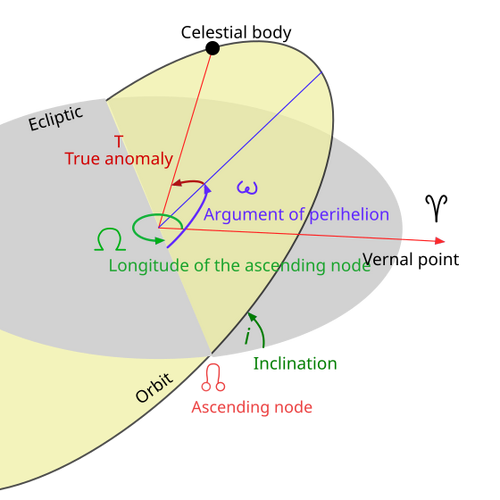An orbital node is one of the two points where an inclined orbit crosses a plane of reference (e.g. the equator for geocentric orbits, the ecliptic for heliocentric orbits). Nodes do not exist for orbits with inclination equal to zero (equatorial orbits or ecliptic orbits).
The ascending (or north) node is where the object moves north from the southern hemisphere to the northern, the descending (or south) node is where the object moves back south. The line of nodes is the intersection of the object's orbital plane with the plane of reference, and runs between the ascending and descending nodes.
- “north” is designated by the Axis of the Earth, both referring to equator or ecliptic. Reference to other planes will need an adequate definition.
The symbol of the ascending node is ☊, descending node is ☋. These are also known as the "Dragon's Head" and the "Dragon's Tail" respectively.
The lunar nodes are subject to lunar precession, which is the gradual shift westward because of the gravitational pull of the Sun upon the Moon. (See also: eclipse)

Fig. 1: The line of nodes is the green line in this diagram.
See also[]
- Lunar node – the orbital nodes of the Moon.